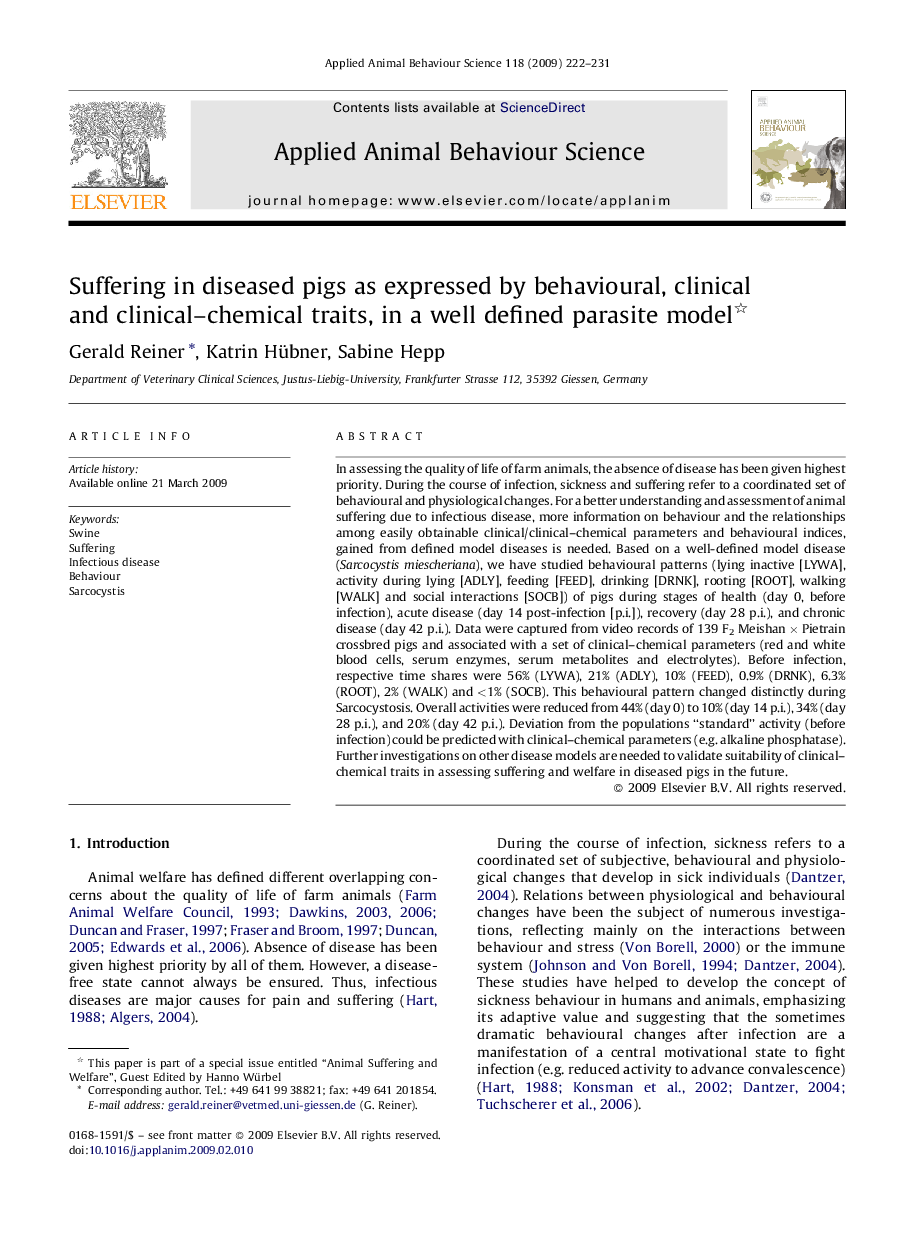| Article ID | Journal | Published Year | Pages | File Type |
|---|---|---|---|---|
| 4523566 | Applied Animal Behaviour Science | 2009 | 10 Pages |
In assessing the quality of life of farm animals, the absence of disease has been given highest priority. During the course of infection, sickness and suffering refer to a coordinated set of behavioural and physiological changes. For a better understanding and assessment of animal suffering due to infectious disease, more information on behaviour and the relationships among easily obtainable clinical/clinical–chemical parameters and behavioural indices, gained from defined model diseases is needed. Based on a well-defined model disease (Sarcocystis miescheriana), we have studied behavioural patterns (lying inactive [LYWA], activity during lying [ADLY], feeding [FEED], drinking [DRNK], rooting [ROOT], walking [WALK] and social interactions [SOCB]) of pigs during stages of health (day 0, before infection), acute disease (day 14 post-infection [p.i.]), recovery (day 28 p.i.), and chronic disease (day 42 p.i.). Data were captured from video records of 139 F2 Meishan × Pietrain crossbred pigs and associated with a set of clinical–chemical parameters (red and white blood cells, serum enzymes, serum metabolites and electrolytes). Before infection, respective time shares were 56% (LYWA), 21% (ADLY), 10% (FEED), 0.9% (DRNK), 6.3% (ROOT), 2% (WALK) and <1% (SOCB). This behavioural pattern changed distinctly during Sarcocystosis. Overall activities were reduced from 44% (day 0) to 10% (day 14 p.i.), 34% (day 28 p.i.), and 20% (day 42 p.i.). Deviation from the populations “standard” activity (before infection) could be predicted with clinical–chemical parameters (e.g. alkaline phosphatase). Further investigations on other disease models are needed to validate suitability of clinical–chemical traits in assessing suffering and welfare in diseased pigs in the future.
